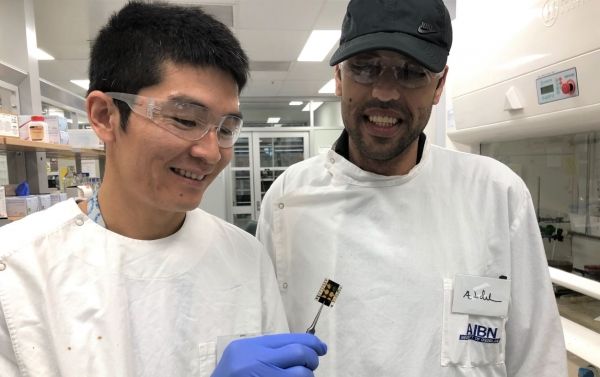A new nanomaterial made from phosphorus, known as phosphorene, is shaping up as a key ingredient for more sustainable and efficient next-generation perovskite solar cells (PSCs).
PSCs which are one of the fastest developing new solar technologies and can achieve efficiencies comparable to more commonly used commercially available silicon solar cells.
For the first time, an international team of clean chemistry researchers led by Professor Joseph Shapter and Flinders University, has made very thin phosphorene nanosheets for low-temperature PSCs using the rapid shear stress of the University’s revolutionary vortex fluidic device (VFD).
“Silicon is currently the standard for rooftop solar, and other solar panels, but they take a lot of energy to produce them. They are not as sustainable as these newer options,” says Flinders adjunct Professor Shapter, now at University of Queensland.
Read more at Flinders University
Image: Solar cell researchers Dr Munkhbayar Batmunkh and Abdulaziz Bati, now at the Australian Institute of Bioengineering and Nanotechnology at the University of Queensland. (Photo Credit: Professor Joe Shapter)


